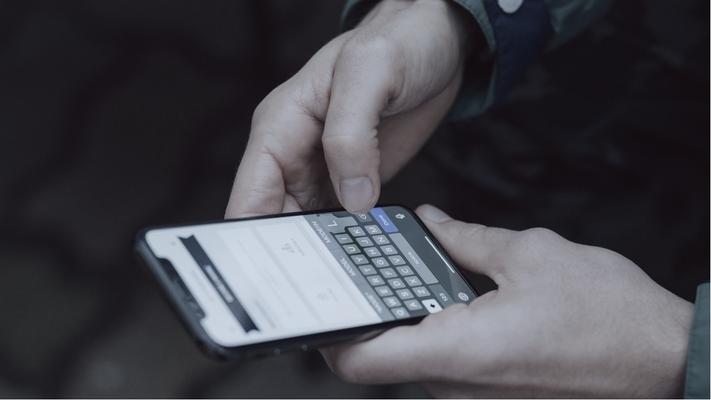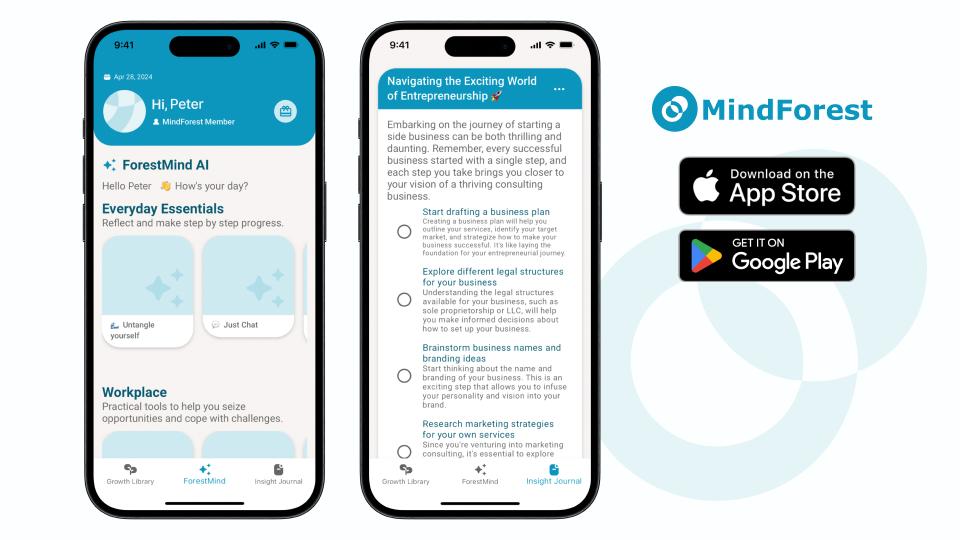
Ghosting and Avoidant Behaviour: Why We Pull Away and 3 Ways to Heal from It
Have you ever experienced ghosting? The two of you were chatting happily the night before, and the next day the person suddenly disappears, never replying again?
Courtship and attraction often begin with small, unspoken signals—a glance, a smile, a slight lean forward. Imagine two people in a crowded room catching each other’s eye, curiosity sparking between them. In this article, we’ll walk through these five phases of courtship, showing how non-verbal cues help shape attraction and connection.

Courtship and attraction often begin with small, unspoken signals—a glance, a smile, a slight lean forward. Imagine two people in a crowded room catching each other’s eye, curiosity sparking between them. From here, they exchange subtle gestures, a touch here, a shared laugh there, as they move through a natural, silent dance. This journey happens in stages, each building on the last, drawing them closer without saying a word. In this article, we’ll walk through these five phases of courtship, showing how non-verbal cues help shape attraction and connection.
The article “The Non-verbal Basis of Attraction: Flirtation, Courtship, and Seduction” by David B. Givens, published in the journal Psychiatry in 1978, explores the foundational role of non-verbal communication in attraction. Focusing on behaviours like flirtation, courtship, and seduction, Givens examines how subtle cues—such as body language and gestures—help convey romantic interest and connection. Although flirtation and courtship may seem straightforward, understanding the nuances of each stage provides deeper insights into the non-verbal signals that build attraction.
In the Attention Phase of courtship, attraction starts with small gestures and a quiet curiosity. This phase often occurs in everyday places, like a coffee shop, where someone might notice an interesting stranger. A simple nod or brief eye contact can serve as a small but important way to acknowledge each other.
Givens mentions Crook (1972), explaining that one often shows mixed signals when they’re unsure if the other person is interested. This uncertainty creates a push-pull effect; for instance, they might lean in a little, glance over, or look away, mixing feelings of interest with hesitation and playing hard to get. This phase is crucial because it lays the groundwork for attraction by showing that both people are aware of each other, like a dance where each move builds excitement.
In the Recognition Phase of courtship, attraction grows as both people acknowledge each other’s presence and potential interest. This stage goes beyond noticing to testing mutual attraction through subtle signals. For instance, one often chooses to signal openness with a small smile or by facing the crush, while turning away or avoiding eye contact can signal disinterest. Kendon’s research (1975) emphasises these non-verbal cues as ways to show interest without committing.
According to Peter Blau (1974), this phase also allows both sides to cautiously gauge commitment. The small, intentional signals help both parties decide if they’re willing to pursue further connection, making this phase essential for building mutual attraction and trust.
The Interaction Phase of courtship is where real communication happens between two people. In this stage, both individuals recognise each other’s presence and see the possibility of a closer relationship. They start engaging in typical social conversations, but the focus of the dialogue is not as important as the feelings behind it. The article notes that you might discuss a serious topic, but your body language and non-verbal cues show that you’re interested in each other.
During this phase, emotions often run high, which can make conversations feel a bit nervous or hurried. Even if the topics seem unrelated to romance or attraction, there is an underlying tension that suggests both people are aware of their feelings. This emotional intensity is a key part of the Interaction Phase, helping to deepen the connection and push the courtship forward as they navigate their growing attraction.
The Sexual-arousal Phase of courtship is a crucial step where attraction deepens and moves towards intimacy. In this phase, conversations shift from general topics to more personal ones, signalling a desire for something beyond friendship. The article highlights that this transition often has two main characteristics. While the earlier Interaction Phase can be fast-paced with a mix of public and private cuesSTART_EMEND_EM
For example, after a meal, a common suggestion to go for dessert can signal a shift towards a deeper connection. Here, non-verbal communication becomes important. People may focus less on words and more on eye contact and body language, reflecting growing interest. You might even notice playful nicknames or gentle touches, representing a caring and nurturing aspect of attraction. Ultimately, this phase prepares both individuals for potential sexual intimacy, marking an important stage in their journey of courtship.
The Resolution Phase of courtship occurs after the Sexual-arousal Phase culminates in sexual activity. Once intimacy is reached, something interesting often happens: social distancing takes place. According to the article, right after sexual union, partners may withdraw to engage in separate activities, like using their phones or simply drifting apart. This phase can feel like a departure, as both individuals might shift into a more solitary mode.
The article suggests that this behaviour is common and reflects a natural progression in relationships. After establishing a sexual connection, there may be less need to continually build intimacy, as the initial excitement of courtship has been fulfilled. This phase signifies a transition where partners might not feel compelled to maintain the same level of engagement as before. Understanding this dynamic helps clarify how attraction evolves and how courtship can change once sexual intimacy has been achieved.
Empathy is important in dating and courtship, going beyond just understanding non-verbal cues. While it’s useful to notice body language and subtle signs of attraction, building genuine connections requires more than that. Instead of trying to manipulate or pressure someone, showing empathy encourages open and honest communication. By actively listening to a partner’s feelings and thoughts, individuals create a safe space where both people feel valued and understood. Empathy helps build trust and strengthens the emotional bond of a romantic relationship (Ulloa et al., 2017), which is essential for successful courtship or dating.
When empathy is present, both partners can explore the complexities of attraction with kindness and patience. They recognize that everyone has different experiences and insecurities. Prioritizing empathy in courtship allows for real conversations about desires, boundaries, and fears. This foundation of understanding helps create a healthier and more enjoyable courtship experience, where both individuals feel empowered to express themselves without fear of judgment. Ultimately, empathy enriches the process of attraction and help us recognise a soulmate connection, making it a more fulfilling journey for both partners.
Navigating courtship and building emotional empathy is crucial for developing meaningful romantic relationships. MindForest, an innovative AI app, offers specialized tools to help you understand your feelings of attraction and foster connection.
These resources enhance your understanding of emotional empathy, equipping you to manage the ups and downs of courtship.
This feature delivers personalized advice for your unique romantic situations. Whether interpreting feelings of attraction or improving communication, the AI mentor provides practical guidance to help you navigate relationships and build emotional understanding.
Tracking your daily interactions and emotions builds self-awareness and deepens your understanding of romantic dynamics. This tool encourages thoughtful reflection on your attraction, enabling you to approach courtship with confidence.

By leveraging MindForest, you gain essential tools to navigate courtship, enhance empathy, and foster fulfilling connections, setting a strong foundation for lasting love.
References
Blau, P. M. (1974). Presidential address: Parameters of social structure. American Sociological Review, 615-635.
Crook, J. H. (1972). Sexual selection, dimorphism, and social organization in the primates. In B. G. Campbell (Ed.), Sexual selection and the descent of man, 1871–1971 (pp. 231–281). Aldine.
Givens, D. B. (1978). The nonverbal basis of attraction: Flirtation, courtship, and seduction. Psychiatry, 41(4), 346-359.
Kendon, A. (1975). Gesticulation, speech, and the gesture theory of language origins. Sign language studies, 9(1), 349-373.
Ulloa, E. C., Hammett, J. F., Meda, N. A., & Rubalcaba, S. J. (2017). Empathy and romantic relationship quality among cohabitating couples: An actor–partner interdependence model.The Family Journal,25(3), 208-214.
Discover practical psychology tips you can apply to your everyday life. From building resilience to improving relationships and finding work-life balance, our blog brings expert-backed insights that help you grow.

Have you ever experienced ghosting? The two of you were chatting happily the night before, and the next day the person suddenly disappears, never replying again?

This article breaks down the psychology of nonchalance, signs of a nonchalant dater, the debate nonchalant vs chalant, and what truly matters when forming modern relationships.

Have you ever felt so intensely drawn to someone that you couldn’t stop thinking about them—imagining every possible interaction, decoding every message, overanalysing every glance? If so, you may not be experiencing love, but something more specific: limerence.
Download MindForest and turn these insights into action. Get personalized support from ForestMind AI Coach, track your progress, and unlock your full potential.